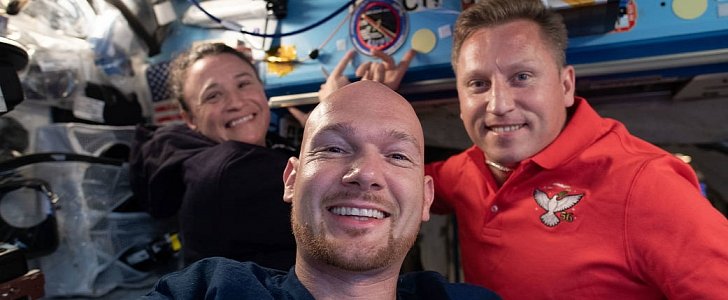There’s a chance that if place all of your eggs into one basket, they will all break and leave you starving.
Currently, humanity has only one spaceship capable of taking people to the International Space Station (ISS) and back, the Russian Soyuz. The Americans are working on three others – SpaceX Crew Dragon, Boeing Starliner, and NASA/ESA Orion – but none of them will be ready by sometime next year at the soonest.
So when the Soyuz becomes unavailable, manned flight to space becomes impossible.
On Thursday, Expedition 57 was supposed to take to the ISS American astronaut Nick Hague and Russian cosmonaut Aleksey Ovchinin and come back a while later with the crew of Expedition 56. The rocket booster of the Soyuz failed mid-flight, causing the two men to return to Earth in their capsule.
Until a proper reason and fix for the mishap are found, it’s obvious there will be no humans going up to the station.
But what of the people already there? Supplies are not an issue, as capsules capable of carrying cargo are aplenty. But it’s now obvious that their mission will likely extend beyond the end of the year, if not longer.
Canadian astronaut Chris Hadfield told Euronews the three people currently on the station (Alexander Gerst, Serena Auñón-Chancellor and Sergey Prokopyev) are essentially stuck there until a spaceship can be launched to get them.
A Soyuz capsule is currently docked with the ISS, the MS-09. It is the same capsule that was found to have a tiny hole in it after causing an oxygen leak on the station in September. It is also a capsule whose life expectancy will expire in December, or January at the latest.
So choosing to bring back the crew using the MS-09 could prove dangerous. In a press conference on Thursday, Kenny Todd, ISS operations integration manager, said NASA also doesn’t want to de-crew the station by bringing the astronauts back and sending none to replace them.
Should the need arise, however, the ISS might be configured to operate without a crew for a while, said Todd, hinting that the agency doesn’t plan to leave three people in orbit indefinitely.
So when the Soyuz becomes unavailable, manned flight to space becomes impossible.
On Thursday, Expedition 57 was supposed to take to the ISS American astronaut Nick Hague and Russian cosmonaut Aleksey Ovchinin and come back a while later with the crew of Expedition 56. The rocket booster of the Soyuz failed mid-flight, causing the two men to return to Earth in their capsule.
Until a proper reason and fix for the mishap are found, it’s obvious there will be no humans going up to the station.
But what of the people already there? Supplies are not an issue, as capsules capable of carrying cargo are aplenty. But it’s now obvious that their mission will likely extend beyond the end of the year, if not longer.
Canadian astronaut Chris Hadfield told Euronews the three people currently on the station (Alexander Gerst, Serena Auñón-Chancellor and Sergey Prokopyev) are essentially stuck there until a spaceship can be launched to get them.
A Soyuz capsule is currently docked with the ISS, the MS-09. It is the same capsule that was found to have a tiny hole in it after causing an oxygen leak on the station in September. It is also a capsule whose life expectancy will expire in December, or January at the latest.
So choosing to bring back the crew using the MS-09 could prove dangerous. In a press conference on Thursday, Kenny Todd, ISS operations integration manager, said NASA also doesn’t want to de-crew the station by bringing the astronauts back and sending none to replace them.
Should the need arise, however, the ISS might be configured to operate without a crew for a while, said Todd, hinting that the agency doesn’t plan to leave three people in orbit indefinitely.

